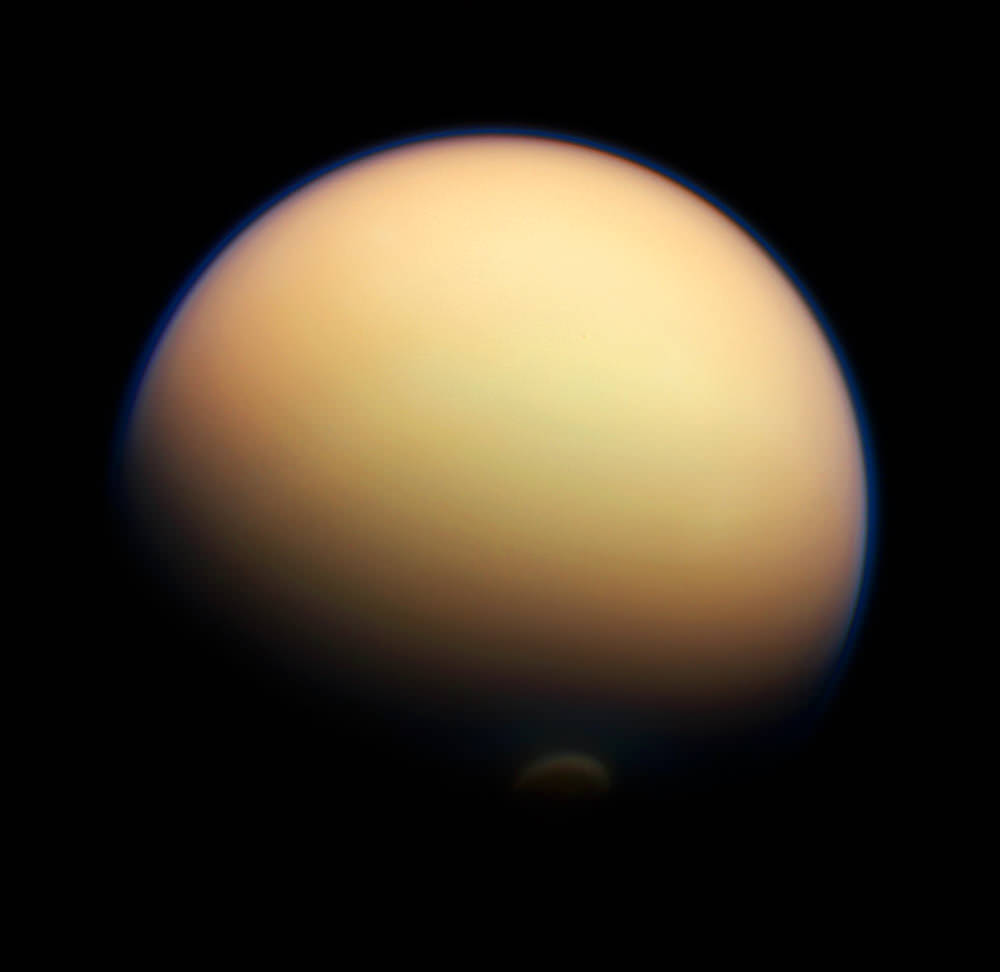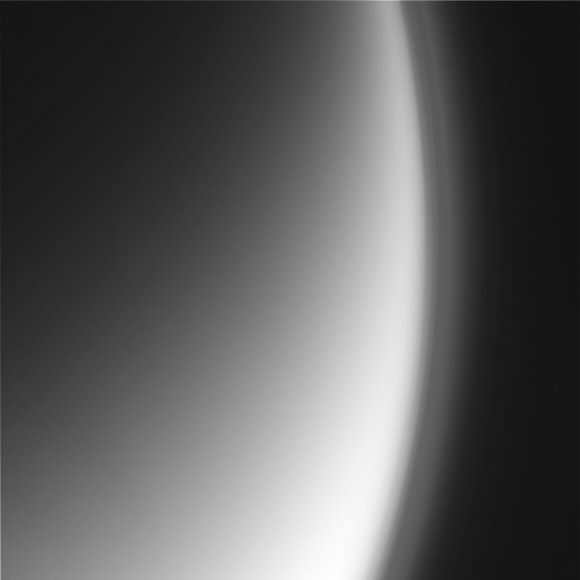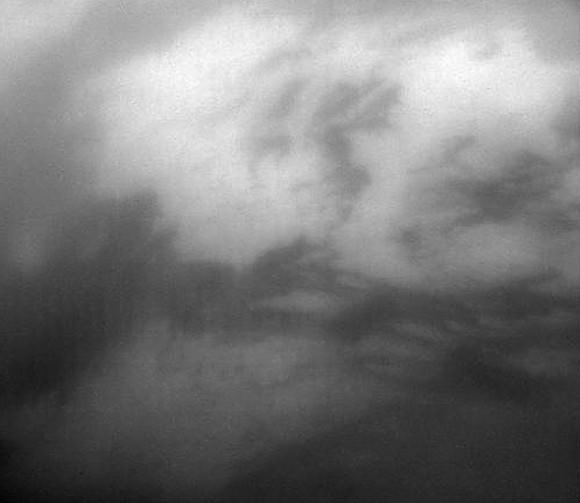Color-composite raw image of Titan’s southern hemisphere. Note the growing south polar vortex. (NASA/JPL/SSI/Jason Major)
Last Thursday, November 29, Cassini sailed past Titan for yet another close encounter, coming within 1,014 kilometers (603 miles) of the cloud-covered moon in order to investigate its thick, complex atmosphere. Cassini’s Visible and Infrared Mapping Spectrometer (VIMS), Composite Infrared Spectrometer (CIRS) and Imaging Science Subsystems (ISS) instruments were all busy acquiring data on Titan’s atmosphere and surface… here are a couple of color-composites made from raw images captured in visible light channels as well as some of the more interesting monochrome raw images. Enjoy!
The structure of Titan’s upper-level hazes, which extend ten times the height of Earth’s atmosphere. (NASA/JPL/SSI)
Cassini captured this view of Titan’s crescent during its approach, from a distance of 193,460 kilometers (NASA/JPL/SSI/Jason Major)
Cassini’s continuum filter (CB3) allows it to image Titan’s surface. The dark areas are vast fields of hydrocarbon sand dunes (NASA/JPL/SSI)
These images have not been validated or calibrated by NASA or the mission team.
Read more about the T-88 flyby here.





GORGEOUS! Absolute Titan porn! Thanks, Jason!
Very impressive set of images.